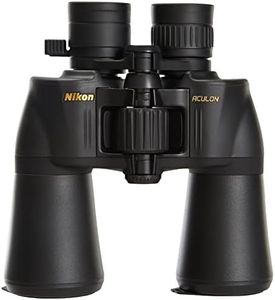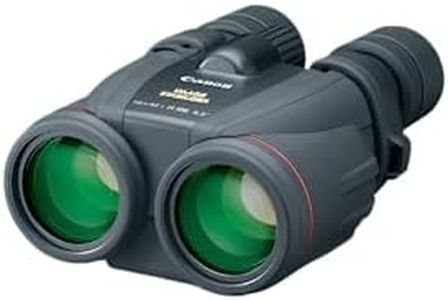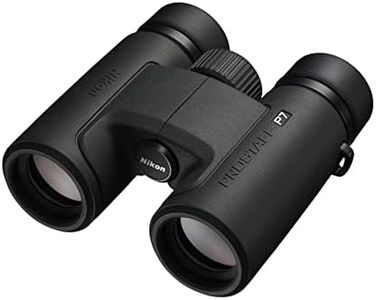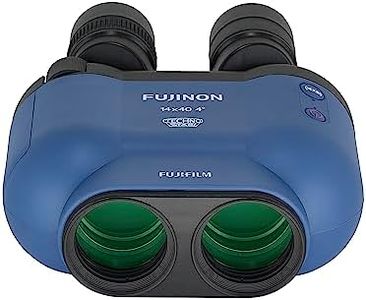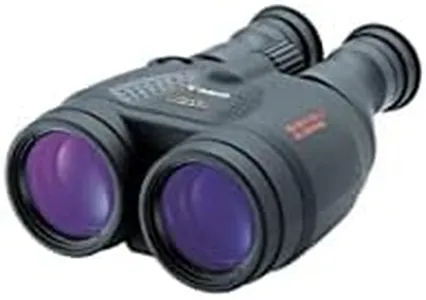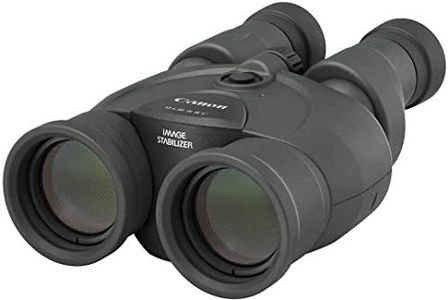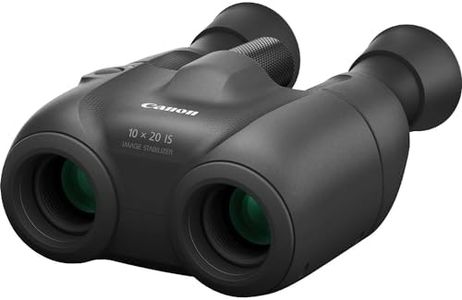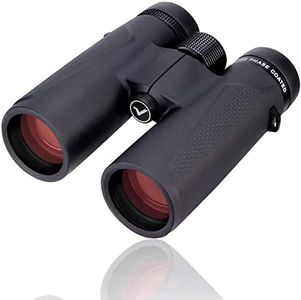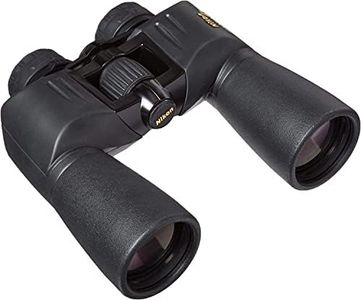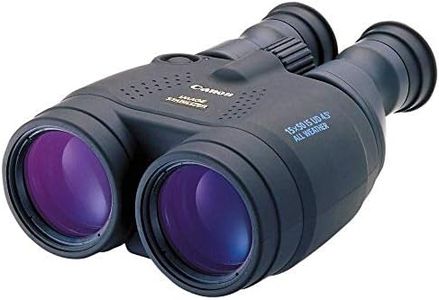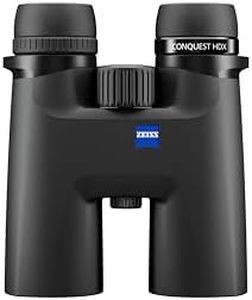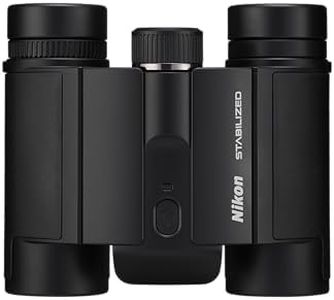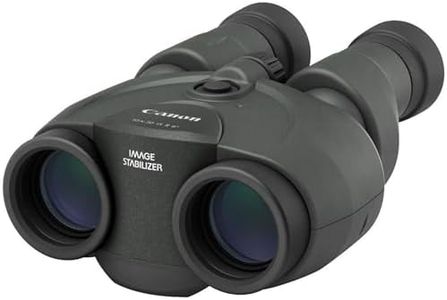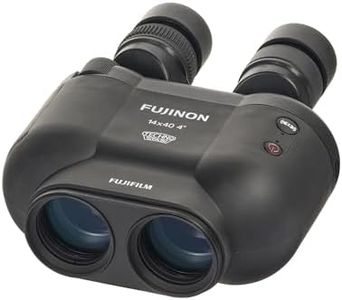We Use CookiesWe use cookies to enhance the security, performance,
functionality and for analytical and promotional activities. By continuing to browse this site you
are agreeing to our privacy policy
10 Best Stabilizer Binoculars
From leading brands and best sellers available on the web.Buying Guide for the Best Stabilizer Binoculars
Choosing the right stabilizer binoculars can greatly improve your viewing experience, especially if you plan on observing distant objects while on the move or in challenging conditions. Stabilizer binoculars come with technology that reduces the shakiness caused by hand movement, letting you see a much steadier image. To make an informed decision, you should focus on a few key specifications that affect image quality, usability, and comfort. Understanding each feature will help you align your choice with your activities, whether that's birdwatching, boating, or general outdoor use.MagnificationMagnification tells you how much closer an object will appear compared to viewing with the naked eye. For example, 10x means objects appear ten times closer. While higher magnification brings distant things nearer, it also amplifies any shakiness from your hands. For stabilizer binoculars, magnifications between 10x and 16x are popular. Choose lower magnification if you want a wider view and less effort to maintain stability, especially if using them for quick scanning or on-the-go observations. Higher magnification might be more suitable if you need to see faraway details, but stabilization becomes even more important in these cases.
Objective Lens DiameterThe diameter of the objective lenses, usually measured in millimeters, determines how much light enters the binoculars and affects brightness and clarity, especially in low light. Common sizes range from 30mm to 50mm. Lenses on the lower end make the binoculars lighter and easier to carry, suitable for daytime or casual use. Larger lenses provide brighter images in dim conditions like dusk or dawn but make the binoculars heavier. Think about when and where you'll be using your binoculars to decide what balance of brightness and portability fits you best.
Stabilization TechnologyStabilization technology is what sets these binoculars apart, actively reducing the image shake that comes from hand movements or vibrations. The type of stabilization and how well it works can differ a lot, from basic electronic systems to more advanced gyroscopic stabilizers. Some systems offer single-axis correction while others stabilize in multiple directions. If you’ll mainly use the binoculars in situations with a lot of movement, like on a boat or in windy conditions, look for enhanced or multi-axis stabilization. For more stationary use or if shakiness isn’t a huge concern, even basic stabilization will offer noticeable improvements.
Field of ViewField of view indicates how wide an area you can see through the binoculars, usually measured as the width at a certain distance. A wider field of view helps you spot and follow objects easily, making it ideal for birdwatching or scanning large areas. Narrower fields of view zoom in more on the subject but show less surrounding area. Choose a wider field for tracking moving subjects or general nature observation, and a narrower field if you want to study details on distant objects or stationary targets.
Weight and SizeThe physical size and weight of the binoculars affect how comfortable they are to hold, carry, and use over long periods. Heavier binoculars may offer better image quality and stability features but can be tiring during extended use or while traveling. Compact, lightweight models are easier to handle and pack, but might compromise on image brightness or advanced stabilization. Consider whether you need something ultra-portable for short-day trips or are okay with a heavier set for maximum performance in fixed positions.
Battery LifeStabilizer binoculars often rely on batteries to power their stabilization technology. Battery life can range from a few hours to several days of use, depending on the system. Longer battery life is important if sessions are lengthy or you won’t have easy access to replacements or recharging. If you often use binoculars for brief periods or day trips, shorter battery life may suffice, but for travel or extended use, opt for longer-lasting or easily replaceable batteries.
